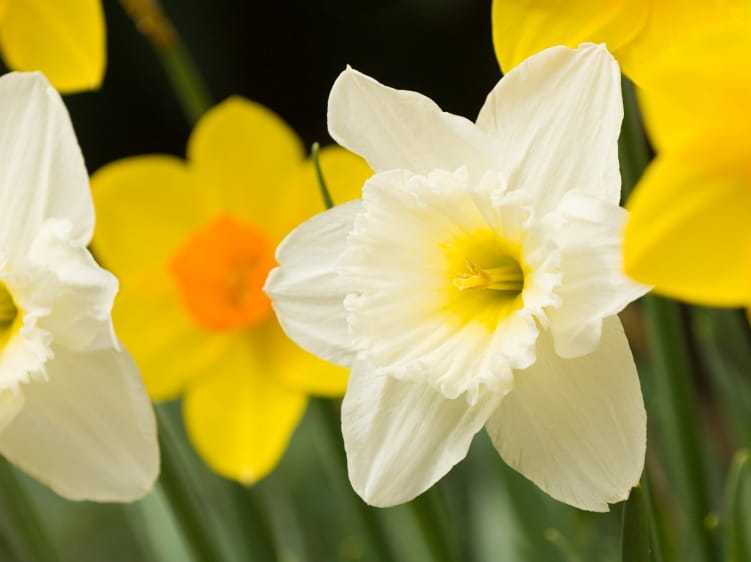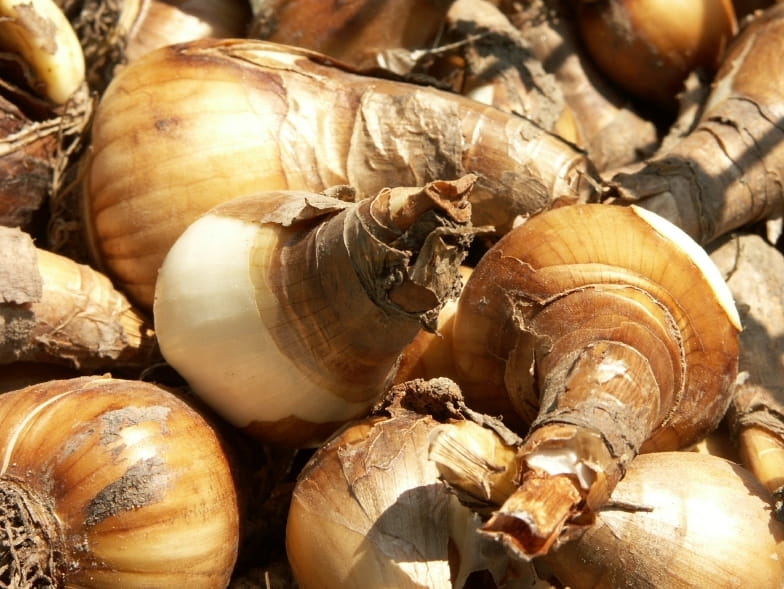Daffodils: Beautiful But Potentially Toxic

The Bottom Line
All parts of the daffodil are toxic. When swallowed, it can cause nausea, vomiting, diarrhea, and abdominal pain. Eating the bulb can cause severe irritation of the mouth and stomach upset. These symptoms are usually not life-threatening and resolve within a few hours.

An introduction to daffodils
Daffodil is the common name for a genus of plants also called Narcissus. Daffodil leaves are long and flat, and the blossoms—distinguished by 6 petals and a trumpet in the middle—are bright yellow or white. The daffodil has a bulb that grows underground and looks like an onion; however, the daffodil bulb does not have the classic onion odor and does not cause tearing of the eyes.
Daffodils bloom early in spring and are considered symbols of hope and new beginnings. For this reason, daffodils are frequently sold in the spring to raise funds for cancer charities.
Are daffodils poisonous?
All parts of the daffodil contain a toxic chemical, lycorine. The highest concentration of lycorine is in the bulb. However, eating any part of the plant can cause symptoms such as nausea, vomiting, abdominal pain, and diarrhea. These symptoms usually last about 3 hours. More severe problems, such as low blood pressure, drowsiness, and damage to the liver, have occurred in animals that ate very large amounts of the plant but have not been reported in humans.
The sap and bulb also contain chemicals called oxalates, which are microscopic and needle-like. When swallowed, oxalates cause severe burning and irritation of the lips, tongue, and throat. They can also cause skin irritation and are the most common cause of contact dermatitis in florists.
First aid for daffodil ingestion
The best first aid for daffodil ingestion is rinsing the mouth well and drinking water or milk. If vomiting and diarrhea persist, watch for dehydration. If a person has severe throat pain, difficulty swallowing, or drooling, medical evaluation and treatment are needed.
Have more questions? Help from experts is available through the webPOISONCONTROL online tool and by phone at 1-800-222-1222. Poison Control’s expert guidance is always free, confidential, and available 24 hours a day.
Serkalem Mekonnen, RN, BSN, MPH
Certified Specialist in Poison Information
Revised William G. Troutman, PharmD
Professor of Pharmacy Emeritus
Poisoned?
Call 1-800-222-1222 or
Prevention Tips
- Keep daffodils out of the reach of children or pets.
- Wear gloves when handling daffodils.
- Watch children closely when they play outdoors to keep them from eating unknown plants, mushrooms, or berries.
- Don’t pick plants or mushrooms growing in the wild to eat (unless you are an expert).
This Really Happened
A 4-year-old girl ate 2 daffodil leaves. Twenty minutes later, she began to vomit, so her concerned mother called Poison Control for advice. Ultimately, the girl vomited 4 times. Poison Control told the mother that vomiting is expected after swallowing any part of a daffodil and that the concern would be if symptoms persisted or worsened. The mother was advised to give the girl fluids to drink and to watch her closely. Poison Control called the mother 2 hours later; the girl had stopped vomiting, was drinking fluids normally.
For More Information
References
Lee KP, Elston DM. Botanical briefs: daffodils (Narcissus species). Cutis. 2023;111(1):41-45.
Litovitz TL, Fahey BA. Please don’t eat the daffodils. N Engl J Med. 1982;306(9):547.
Saxon-Buri S. Daffodil toxicosis in an adult cat. Can Vet J. 2004;45(3):248-250.
Poisoned?
Call 1-800-222-1222 or
Prevention Tips
- Keep daffodils out of the reach of children or pets.
- Wear gloves when handling daffodils.
- Watch children closely when they play outdoors to keep them from eating unknown plants, mushrooms, or berries.
- Don’t pick plants or mushrooms growing in the wild to eat (unless you are an expert).
This Really Happened
A 4-year-old girl ate 2 daffodil leaves. Twenty minutes later, she began to vomit, so her concerned mother called Poison Control for advice. Ultimately, the girl vomited 4 times. Poison Control told the mother that vomiting is expected after swallowing any part of a daffodil and that the concern would be if symptoms persisted or worsened. The mother was advised to give the girl fluids to drink and to watch her closely. Poison Control called the mother 2 hours later; the girl had stopped vomiting, was drinking fluids normally.
